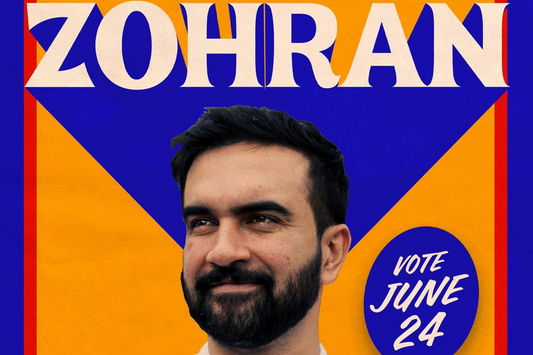The dramatic results of New York City’s democratic mayoral primary aren’t just a moment of reflection for the political establishment but also the marketing establishment on Madison Avenue and beyond.
Zohran Kwame Mamdani, the Ugandan-born, Indian-American, 33-year-old democratic socialist has taught even the most seasoned campaigners what it means to be a successful leader contesting for one of the world’s most competitive and coveted mayoral seats. Former New York Governor Andrew Cuomo’s defeat by Mamdani marks a rare moment where legacy politics appear to be toppled over by a newcomer whose toolkit is anchored on community building, viral social content, and an unapologetic communications strategy around affordability.
While Mamdani’s victory may come as a surprise to some, what others know is that he has been building community and coalitions across the city since before his campaign began. Instead of lecturing, he has listened to voices who have never been part of the political process, making them feel seen and heard.
For brands looking to market to increasingly influential, diverse audiences, this is a masterclass and demonstration of the power of social listening before building campaigns and creative work.
Let’s break down how Mamdani’s bid to connect with his voters gave rise to the popularity and sweeping mandate he earned in the last few months alone.
A singular core message for the people
What was the message? Make New York City livable for the many, not the few.
Affordability is the clear and consistent message Mamdani has championed across all touch points in his campaign. Moreover, he acknowledged that New York City needs to accommodate all its ethnicities, races, and socioeconomic classes that work hard to cover their rent, commuter fare, groceries, and other costs of living. He also tailored his communications style – and language – to authentically connect across communities.
Communicating the message effectively
How did the message get shared? Community engagement, slick videos, and straightforward messaging.
Mamdani hasn’t shied away from being accessible to his voters. In his own words, he believes the people need a mayor that they “can yell at.” Voters today want the same.
From visiting hundreds of mosques in the weeks leading up to his win, walking across Manhattan to chat with voters and media, to making quirky digital content for Instagram and other social channels using trendy templates, Mamdani’s presence in-person and online has been a force to be reckoned with.
Another key element has been the way he’s matched the pace of a harried, multitasking New York City voter who can’t spend hours watching political speeches or debates but can watch a minute-long Instagram reel that gives them the reassurance they need from their mayor-to-be.
He has connected with the massive, varied diaspora of immigrant New Yorkers, a rising majority who prefers facts and clearly articulated plans. He has managed to persuade sharp-eyed, young – and often first-time – voters of the difference he can make on issues ranging from human rights to climate challenges and economic safety nets for those struggling to get by.
Mamdani’s humility and accessibility have become even more appealing with the eye-catching aesthetics and graphics on his social media, website, and seemingly ubiquitous placards. His campaign’s design, messaging, and execution have maintained a strong emphasis on efforts to drive communal harmony, engagement, and progress on equal footing.
Beyond this, Mamdani has consistently tapped into the language and culture of everyday people, whether it’s Bollywood humor, mango lassi, or matcha lattes. His keen understanding that he needs to meet his audience where they are has helped his messages get shared actively across countless Instagram reels and Tik Tok feeds, where his audience is the most receptive and active.
A case study in building a 21st century marketing machine
The critical takeaway here isn’t about Mamdani’s political or policy positions. His campaign has demonstrated that marketing to what still gets considered niche audiences should officially be considered marketing to today’s mainstream audiences. The audience – and their influence – have arrived.
This has been a paradigm shift that all of us as marketers must incorporate in our daily work, yet we continue to see many brands ignoring the reality.
Zohran Mamdani has woven together seemingly disparate communities that make up the fabric of New York City, with singularly-focused, culturally relevant, multilingual messaging, ensuring that audiences typically ignored feel included and seen. And in return, his audience – the voters of New York City – have rewarded him with a stunning mandate that defied all polls and expectations.
As marketers, we can build a new playbook that takes from Mamdani’s momentum and real-time community building, engagement, and action, integrated with digital savvy to drive marketing ROI. This is a moment to reflect not only on our own roles as individuals but the power of community to deliver novel insight and stepchange how our brands come to life.






